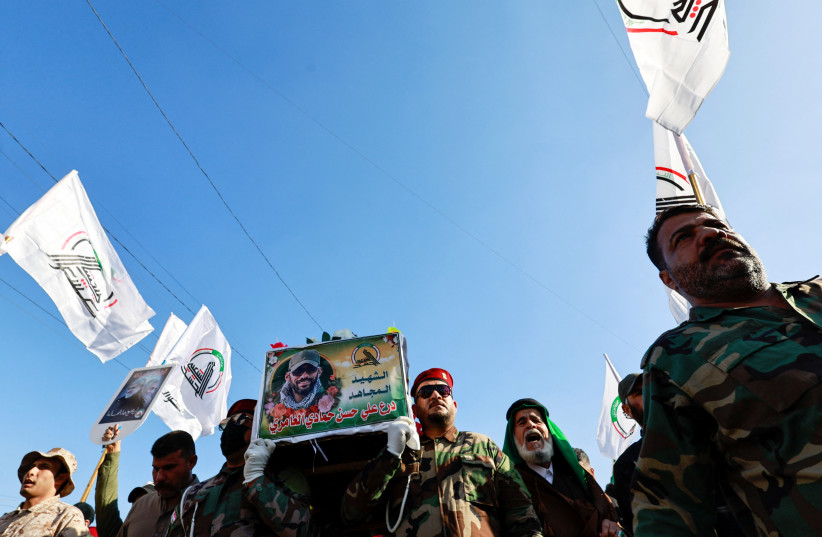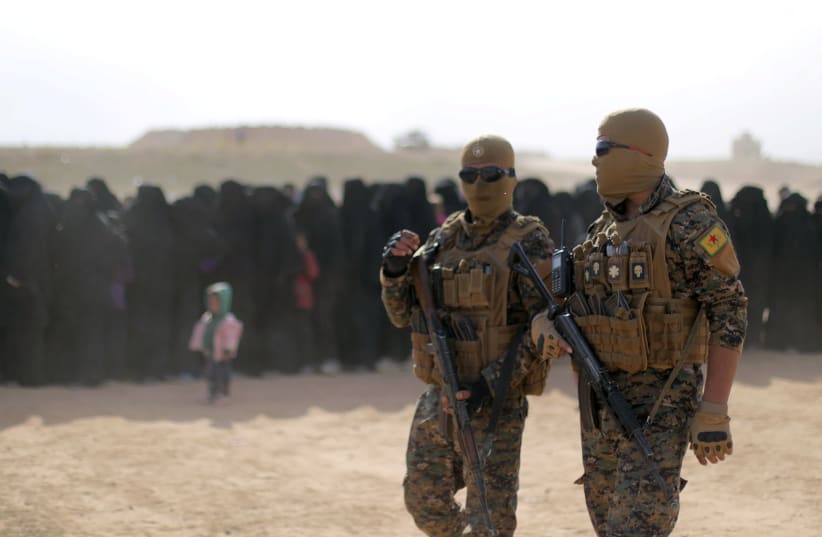Iranian-backed militias in Iraq targeted US forces in Jordan on January 27, killing three Americans; the US responded this past Friday, striking 85 targets in Iraq and Syria. Many of the targets were empty buildings but several reports have said that among the casualties were members of the Iranian-recruited Liwa Fatemiyoun, a unit of Shi’ite Afghans who serve Iran’s interests in Syria.
According to the cited sources, including Omar Abu Layla, a Syrian expert and head of Deir Ezzor 24, the number of Fatemiyoun killed included eight men. Iran International reported similar information.
This means that the Afghan recruits were killed in the strikes. The question is, why were Afghans killed in Syria if the perpetrators were linked to the Iranian-backed Iraqi militia Kataib Hezbollah? Kataib Hezbollah is the worst of the Iranian-backed forces in Iraq because it is not only closely linked to the Iranian Revolutionary Guards Corps (IRGC), but also because it is the most brutal, best trained, and most die-hard of the Iranian-backed forces in Iraq.
The Afghans were killed because their bases in Syria tend to be simple, poorly constructed, and are used by Iran as cannon fodder in Syria. Iran exploits Afghan Shi’ites, a persecuted minority in Afghanistan, luring them, with promises of money and rewards of faith, to come and fight in Syria.
And this isn’t the first time. They used them first during the Syrian civil war, which started in 2011. These men embraced the Iranian ideology, even putting out statements threatening Israel. Over the last decade, they died by the dozens and hundreds in Syria; Iran puts them on the frontline and in exposed positions.

Iranian-backed forces in Syria targeted the SDF
On Friday, they were once again exposed, after Iran informed its other militias to evacuate their bases. The Afghans, who tend to be penniless, were left out in the open and became victims of a foreign war that they had no real part in, and where they had no reason to be located.
Days after the incident, near Deir Ezzor in the Euphrates River Valley, another took place: On Monday, the US-backed Syrian Democratic Forces (SDF) announced that “six of our fighters were martyred during a terrorist attack by a suicide plane originating from areas controlled by Syrian regime mercenaries, targeting a training academy in the al-Omar field,” east of Deir Ezzor.It was clear that Iranian-backed forces in Syria targeted the SDF, although this is likely the Iranian “response” that the US wanted, which itself was a response to the Iranian-backed militias murdering three Americans. These militias have carried out around 160 attacks on US forces since the Hamas attack on Israel on October 7 set the region on fire – following a decision by Iran to escalate attacks.The attack on the SDF appears to be an attempt by Iran to guide its militias to attack where there are US forces, including non-US forces that work with it. You might call this a “proxy war,” but the fact is that SDF fighters, which include Kurds, Arabs, and Afghans, didn’t sign on for a “proxy war.”The SDF was created in 2015 with US support as an umbrella group to bring together the Kurdish YPG, who were fighting ISIS in Syria with other Arab elements who wanted to join a larger group to fight ISIS. The SDF is the main military force in eastern Syria. For years, the group has been targeted by Turkey in airstrikes, while Ankara backs extremists in northern Syria, most of whom hate Kurds. Ankara claims the SDF is linked to the Kurdish Workers Party (PKK).What this means is that the SDF has already paid a high price for working with the US. It is understood that Ankara’s strikes are a message to the US, killing SDF members to get back at the US for its involvement.Turkey and the US are NATO allies, so Turkey can’t attack US forces directly – the SDF makes an easy target. Despite their close relationship with US forces, which includes the sharing of facilities, no one defends them.The Iranians have now adopted the Turkish model. Its militias kill SDF members to get back at the US as part of a larger Iranian campaign. Iran then purposely deploys Afghans in Syria in the open, as easy targets for US retaliation.The entire process thus ends without either of the main forces or countries involved coming to blows, while, de-facto, a war continues on the ground with proxy groups that didn’t start it, groups that bear the brunt of casualties.US service members were killed in Jordan. However, rather than witnessing a retaliation against the key IRGC officials and their collaborators responsible for the attack, many of the pro-Iranian groups in Iraq and Syria evacuated their camps between January 28 and February 1. Iran likely provided them with the details of where to go, leaving its Afghan human shields vulnerable. The full details of these incidents will likely remain unclear.Whether the US knew it was targeting Iranian-backed Afghan forces, whether the Iranians purposely flew a drone into SDF forces, or whether the two are merely products of a complex war, is unclear.Six dead SDF members remain a fact though, along with eight Afghans – the two groups with the smallest role in this conflict and that have the least to gain by its growth.